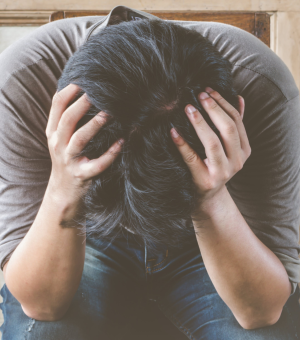Wednesday, December 8, 2021
Hairloss: different types, different solutions
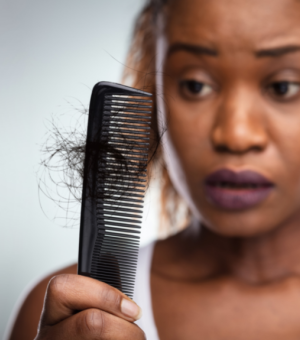
Put your skin first
Alopecia (hair loss) may occur after major surgery, after delivery, or due to other physical or psychological stress. It can also be attributed to underlying diseases that cause hormonal imbalance or to the use of certain drugs.
Some hair loss cases are part of the natural growth cycle – growth, rest, fall and regrowth. Hair loss can be temporary or permanent, depending on the cause.
People who lose their hair, both men and women, can experience depression, anxiety, social isolation, low self-esteem and poor self-image.

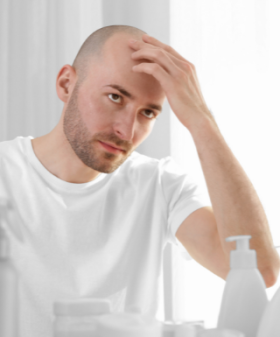
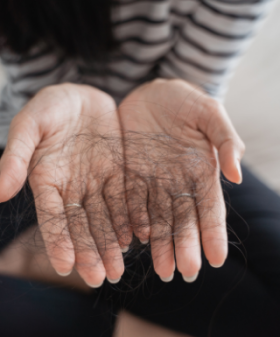
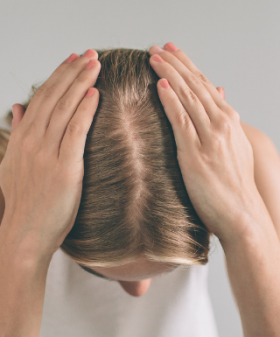
Hair loss treatments
With proper treatment and close follow-up, hair loss can be reduced!
Topical treatment
In foam or lotion applied 1 to 2 times per day.
Oral medication
Depending on the cause, different tablets to be taken continuously.
According to your diagnosis, our team of experts will recommend a treatment adapted to your condition.
In all cases, these treatments must be taken over a very long period of time. In fact, the treatment works and stabilises hair loss while it is taken, but when it is stopped, there is a good chance that hair loss will resume in the case of androgenetic alopecia.
Non-scarring alopecia is more common and includes mostly three conditions: androgenetic alopecia, alopecia areata and telogen effluvium.
Androgenetic alopecia results in the appearance, on the top of the head, of thinner and often less pigmented hair, which becomes lighter. This baldness can affect the top of the head uniformly, or start by affecting the tip of the head or the temples.
Androgenetic alopecia results from two factors: a genetic predisposition and sensitivity to androgens.
It is important to note that alopecia is not contagious, but rather an autoimmune disease that causes hair loss. This hair loss is usually localised. This type of alopecia can be isolated over time and resolve itself. However, the disease can also progress. It then becomes important to treat the problem.
Telogen effluvium consists of post-stress hair loss and is signaled by a thinning impression of the hair that is accompanied by a large quantity of hair found on clothes, on the floor, in the shower or on the hairbrush.
Telogen effluvium can have many causes. Hair loss occurs 2 to 3 months after a triggering factor such as a serious infection, a high fever, childbirth, an accident or even a psycho-affective shock. However, it is crucial to remember that this type of alopecia is generally temporary and reversible.
Dermago's online consultation is quick and easy!
No need to wait months to see a dermatologist in person- we can take care of everything online!
To get started, simply answer a few questions and attach a picture of your skin concern.
Once you’ve completed the questionnaire, choose your consultation timeline - get your plan in less than 7 days.
One of our medical experts will get back to you with a treatment plan. Prescriptions are sent directly to your pharmacy.
Treat your condition with dermago!
Starts at $165
To get a diagnosis and prescription treatment for minor conditions or rejuvenation care.
Ideal for skin problems such as acne, rosacea, psoriasis, eczema, hair loss, nail fungus or to treat wrinkles, fine lines and pigmentation spots.
A nurse will handle communication and follow-up with you, while the dermatologist will make your diagnosis and treatment recommendation.
Starts at $299
To get a diagnosis and prescription treatment for all skin conditions, including moles and melanomas.
Ideal for more serious or chronic skin problems.
As of September, you will also be able to book appointments with our dermatologists AT OUR CLINIC.
Start your consultation and then choose the plan that suits you best.
Looking to learn more?
Wednesday, December 8, 2021

Wednesday, February 9, 2022
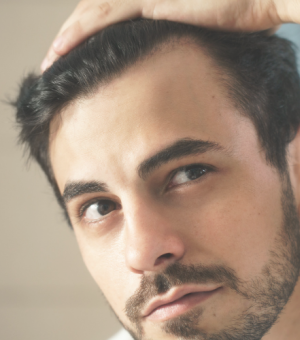
Wednesday, May 25, 2022
